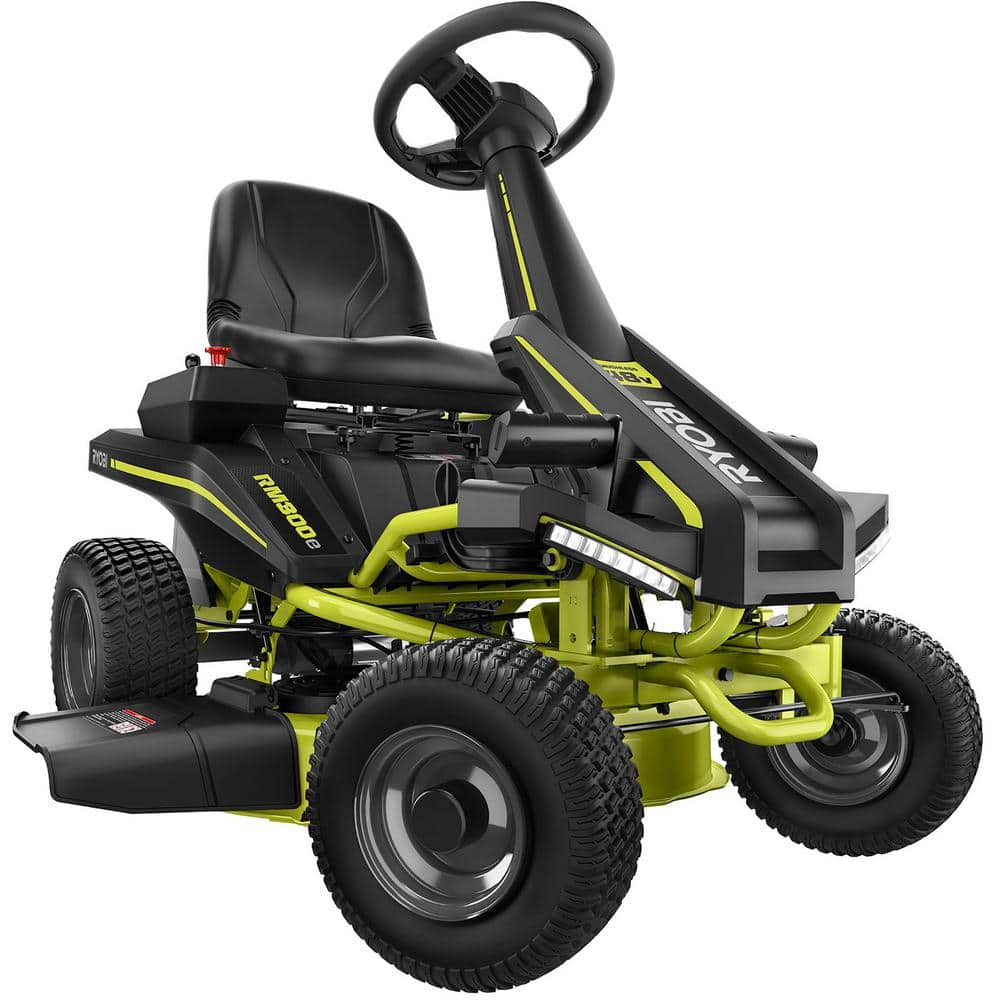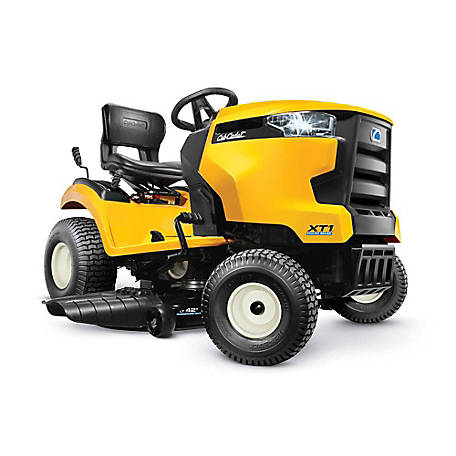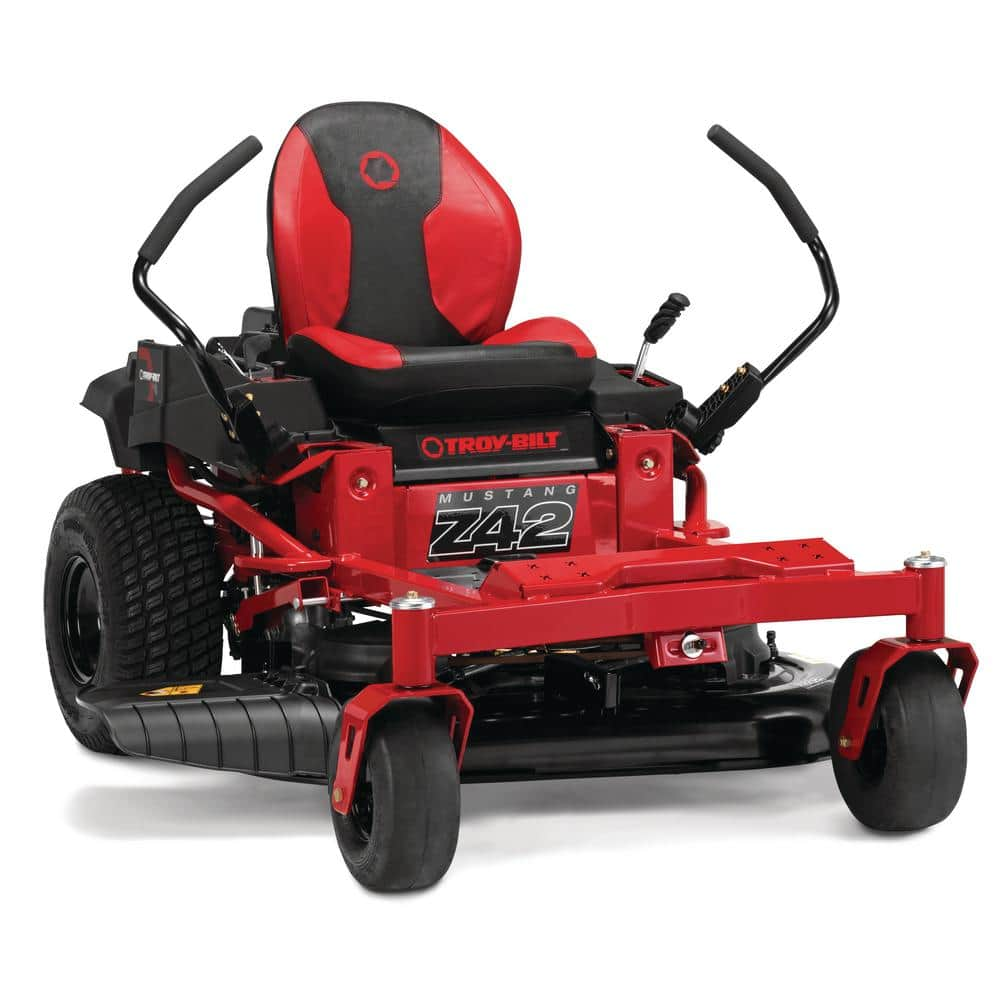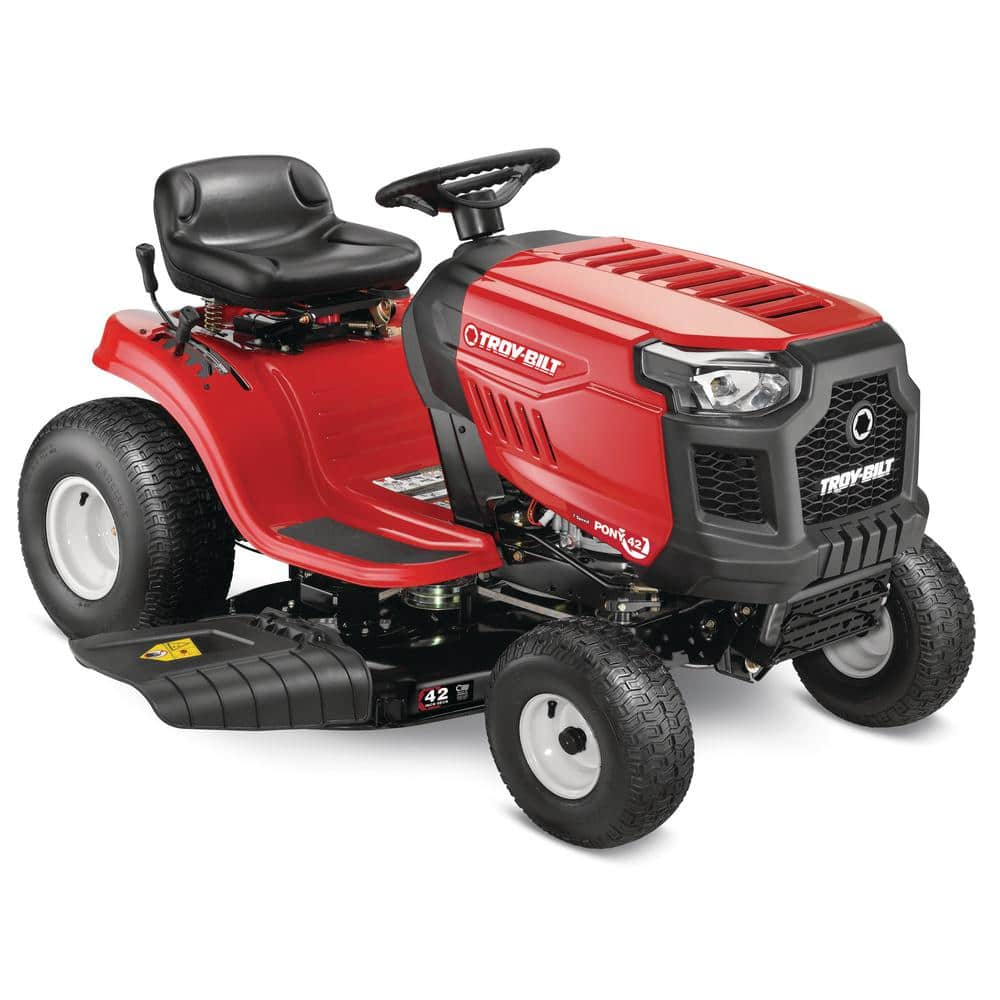RYOBI 30 in. 50 Ah Battery Electric Rear Engine Riding Mower
3 Brushless Motors for Superior Power and Performance. 1 Charge Offers Up to 1 Hour of Runtime or 1 Acre of Mowing. Battery Operated: Fully Electric Mower With Zero Emissions.
The RYOBI 48-Volt 30 in. Riding Lawn Mower is clean, quiet, and unbelievably powerful. This fully electric mower has no gas and no fumes – just charge and go. It’s powered by 50Ah lead-acid batteries and three high powered brushless motors to give you up to 1 acre or 1 hour of runtime on a single charge. It features two steel blades and durable 30 in. cutting deck that fits in fenced areas with ease. The 7 position manual deck adjustment allows you to choose a heights ranging between 1.5 in. – 4.5 in. to get a clean, level cut on your lawn. The RYOBI 48-Volt Riding Mower is equipped with premium features like LED Headlights, battery level indicator, and a cup holder to make mowing comfortable and convenient. The rear access charging port makes charging your rider easy when the job is done.
- Lead-Acid Battery operated: no gas, fumes, charge and go
- Low maintenance: no belts, spark plugs or filters
- Up to 1 acre or 1 hour of runtime
- 3 high-powered brushless motors
- Quiet cutting
- LED headlights
- 1.5 in. – 4.5 in. adjustable cutting height 7-position manual deck adjustment
- 30 in. durable steel deck 2-blade deck
- Charges through standard 120-Volt outlet
- Fits through a standard 42 in. fence gate
- Replacement battery: Leoch model 6-EVF-50
- NOT Compatible with Blade Models: ACRM001, ACRM002, ACRM003, ACRM005, ACRM006, ACRM007
Additional information
| Assembled Depth x Height x Width (in.) | 56 x 45 x 41 |
|---|---|
| Cutting Width (in.) | 30 |
| Front Wheel Size (in.) | 13 |
| Mower Deck Width (in.) | 30 |
| Rear Wheel Size (in.) | 16 |
| Turning Radius (in.) | 16 |
| Certifications and Listings | TUV Listed |
| Manufacturer Warranty | 3 Year on the Mower, 1 Year on the Batteries |






by Steve
+ Delivered assembled charged and ready to go + Rides good and fun to drive. It’s kinda like a go cart with blades. Other people say rides rough but hey it doesn’t have shocks and struts OK + Three year warranty + Electric: no gas, no oil, no fumes, no pulling cord 10 times to start (with a prayer) turn key an GO + As others have said with blades running sound like a big box fan. Not running blades quite as mouse. Cut the grass at midnight anyone – Dismount on right hard because of key and control box. Dismount on left ok but would be nice if step above blade carriage so you don’t step on that during dismount. Not a big thing maybe version 2 huh?. – Service center 30 miles away, however maybe they have confidence you won’t need service in warranty -and I have found it common with manufactures to centralize centers. As far a durability and cost of replacement batteries AGM we will see. They are more expensive even in autos. However, for me and my son we are both happy with this lawn mower. When I tell him we have to cut the grass I see a grin instead of a frown. Hey, worth the money!.
by Van
Very well thought out design and cuts beautifully. Battery power is excellent Bouncy ride if your yard is not smooth.
by Agata
Love it! Would buy again.
by Bruce
Overall this is a great machine. Bought it one year ago. Mows fine and the deck comes off in 5 minutes. It will tow your dump cart loaded around with ease and so quiet and go to pick up the mail too!. Only issue I had was a squeaky steering and that was fixed by putting some lube on the rack, for the rack & pinion. Only design feature to improve would be adding pivoting front axle for uneven ground. Expensive but worth the extra. No gas and oil required, we love it!
by Jules
This mower was well packed on a steel frame for transportation. There was some finish assembly required, which was explained in the instructions. I finally had a chance to use it on my lawn and it performed flawlessly. It is easy to operate and quiet. There is no more noisy and smelly exhaust, or all the maintenance that goes with a gasoline mower. The directions show just some lubricating points to perform occasionally.
by Harry
I am 5’2″ this is the only mower I have found I can reach the pedals. it is a fantastic mower and easy to use, super quick to learn. I love Ryobi products already so this was an obvious choice. I was in a car accident and a push mower is too painful. The best way to do a chore I hate.